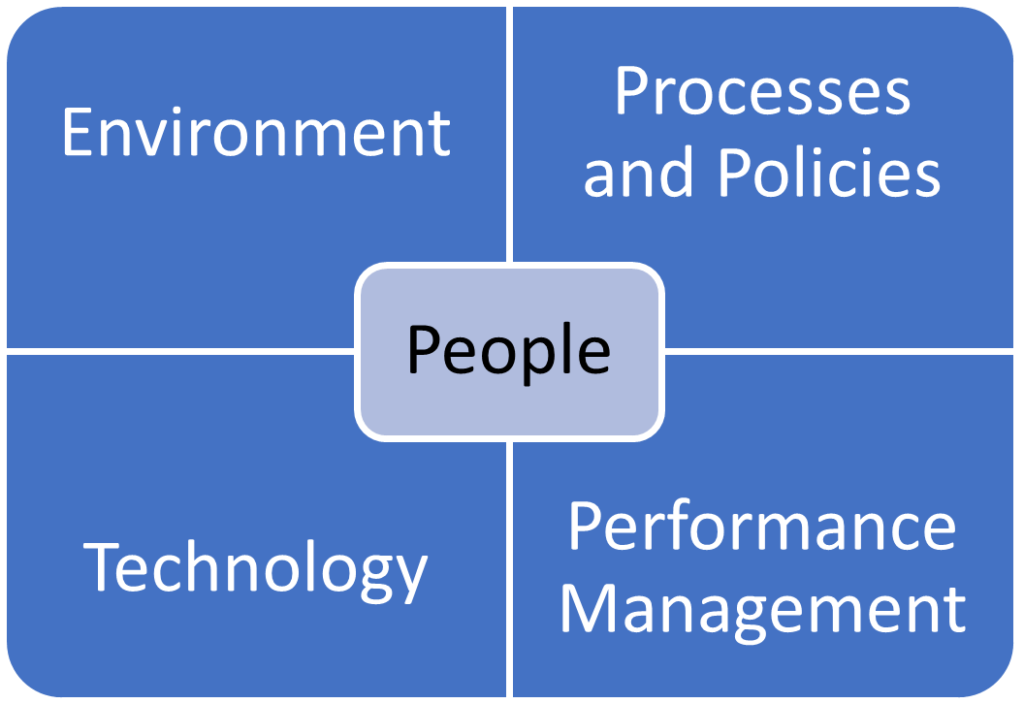Remote Working During COVID-19
I am now a remote worker. Like so many others, this was a role forced on me due to the COVID-19 pandemic. I have worked from home in the past and found myself gradually easing back into the position. I have a set routine, and I get much more work done throughout the day. My projects are all running fast and furious. Collaboration on project work has improved. But I have a confession to make: It’s not easy. It’s not the same as going into an office every day. And, on some days, it’s still a struggle.

COVID-19 forced everyone to change quickly, but more and more organizations are opting to transition to a more permanent remote work policy. There are many compelling reasons for this trend, from an increase in productivity, to cost savings and environmental benefits. How do you make remote working a permanent feature for your organization? Let’s look at the changes that can help you.
Environment
Organizations spend a lot of money on the physical work environment: cubicles, office furniture, office supplies, meeting space, and more. All to provide a physical environment that is conducive to work. When COVID-19 hit, there was no time to consider whether workers could recreate this at home.
For a long-term remote work arrangement, however, the physical space is essential. Does each of your employees have a workspace at home? Workers need a physical environment where they can work in comfort. Do they have the appropriate furniture to work comfortably from home? They may need suitable office furniture and guidance on setting up a comfortable remote workspace. How can you help?
Fortunately, there are many strategies organizations can use to ensure the remote work environment is conducive to working:
- Consider reimbursing to workers who need to set up a home workspace. You don’t need to cover a full remodel, but an allowance for items like office chairs may be beneficial.
- Provide a mechanism, such as direct shipping, to get supplies directly to your workers.
- Allow flexibility, so workers with children at home can balance their time most effectively.

Processes and Policies
With the pandemic, remote working became the default reaction for many organizations trying to maintain a semblance of normal operations. In a long-term remote work scenario, a proactive approach will better prepare you and your workers for success.
Establishing a remote work policy is critical to ensure everyone understands the expectations and to protect both the organization and the worker. There are legal ramifications that organizations need to be aware of and your Human Resources team may be best poised to address some of these questions with you:
- What are the policies around using a personal computer or other equipment for work purposes?
- Where can employees remote work from? Home? A vacation location? A public setting? A specific geographic region?
- Does compensation look different for remote workers? Will the organization reimburse them for a portion of their internet or electricity?
- What work times are expected? How will time off and sick leave be handled?
- How will workers’ compensation apply if a remote worker is injured at home?
- How should hardware be protected?
- What roles are eligible for remote work? Are there some tasks that must be done on-site?
- What frequency of remote work will be allowed? Will employees be able to opt-in or out of remote work as needed?
Technology
The IT needs of a remote workforce are very different from those of an on-site team. From hardware to collaboration software to data security, organizations should carefully consider a worker’s needs and identify the best way to meet those needs while still protecting the organization. 
Does your remote team have the right hardware and equipment to perform their tasks? Early in the COVID response, I had to create a rather detailed process flow from a teeny tiny laptop screen. During that time, I very quickly discovered that a second monitor makes some tasks much easier! (I also found that it’s time for new glasses – the reading part of my bifocals just couldn’t cut it. Let’s all chuckle at the thought of me hovering an inch from the screen and squinting to try to make sure each connector was lined up correctly!)
The software needed for routine remote work is different as well. Do you already use cloud-based or VPN technologies so users can access their data remotely? What type of collaboration software is available? Do your workers have access to video conferencing software? There may be additional security measures you need to put in place to protect your data as well.
Finally, the best software, hardware, and security tools in the world won’t help if your workers do not have the appropriate knowledge and training. Make sure they know how to use the technology available to them for remote work and that they are comfortable with the technology. You may need additional training, guided walkthroughs, or dry runs to facilitate adoption and use.
Performance Management
Leading remote teams and supervising remote workers is not the same as leading or managing their on-site counterparts. Organizations need to modernize their approaches to supervision and management to allow for the changes that come with remote work.
By emphasizing excellence and having a system in place to measure productivity, leaders and managers can monitor the performance of their remote workforce. Shifting a focus to measure the quality and outcomes of work, rather than the time worked, promotes this approach. Regular status updates can help to ensure that progress and performance meet or exceed established expectations.
Provide clear and consistent key performance indicators for work tasks. With mutually understood instructions and milestones, work can be measured and assessed. Incorporating visual management boards also helps provide a reminder of what the team goals are, and the progress being made toward them.
Finally, ask probing questions to make sure remote workers are poised for success. For example:
- What is your setup for working?
- How can I help you be more successful in working remotely?
- What tools could help you be more productive?
- Do you have everything you need?
- Do you feel supported?
- Do you feel like part of the team?

People
The lynchpin for remote work is making sure your people are ready. While the tasks may be the same, remote working is not the same as on-site – the experience and expectations are different. Make sure your workers are poised for success!
Organizations may need to refocus on building relationships and trust amongst coworkers, especially in new teams. Weekly meetings can help build camaraderie through real-time connections. Collaboration tools, such as instant messaging or collaboration software, can certainly help make these connections. Encouraging workers to share their cameras and do live video feeds can help build relationships and is one of the best substitutes for in-person meetings.
Offer ways to mimic the same types of informal interactions that occur in the office. Encourage informal discussions and networking. Virtual luncheons or coffee breaks can help maintain an atmosphere and culture of collaboration. A collaborative site for informal discussions can also help workers relate to one another. There are many creative ways to achieve this informal interaction. What other things can you do to accomplish this?
We all learn and communicate in different ways. It’s easier to accommodate individual needs when workers are on-site. Still, it’s essential to accommodate those needs for remote workers as well. Recognize that your employees work, learn, and communicate in different ways. Tailor approaches that will allow for all of these styles.
Remote work is different, but many experts predict that it is here to stay. Is your organization prepared for this shift? Are your workers prepared? By looking at critical areas and proactively addressing the needs of your workers, you can ensure your organization is ready to continue with the “new normal.”

 Tap to email
Tap to email
